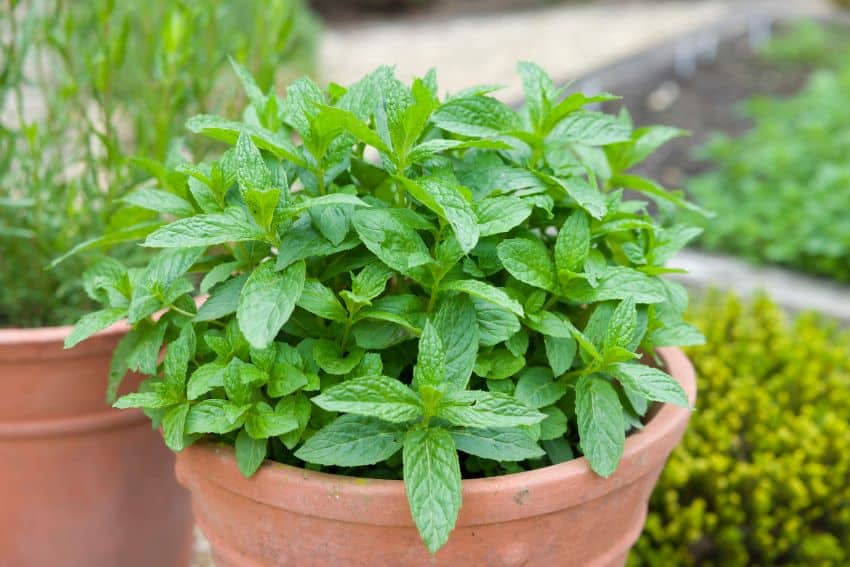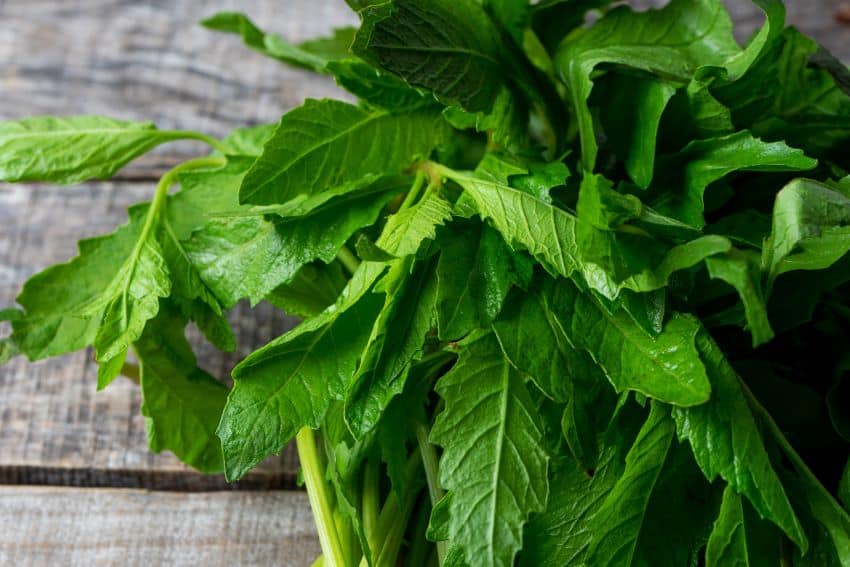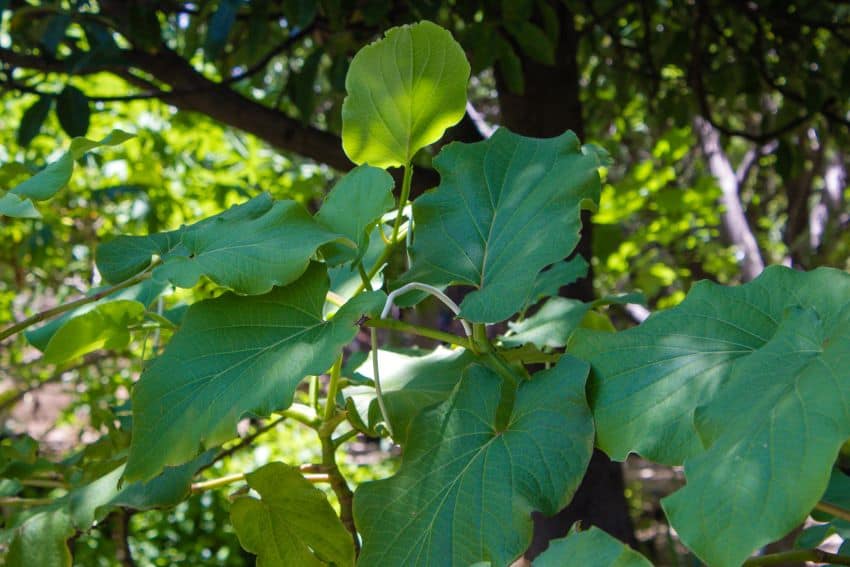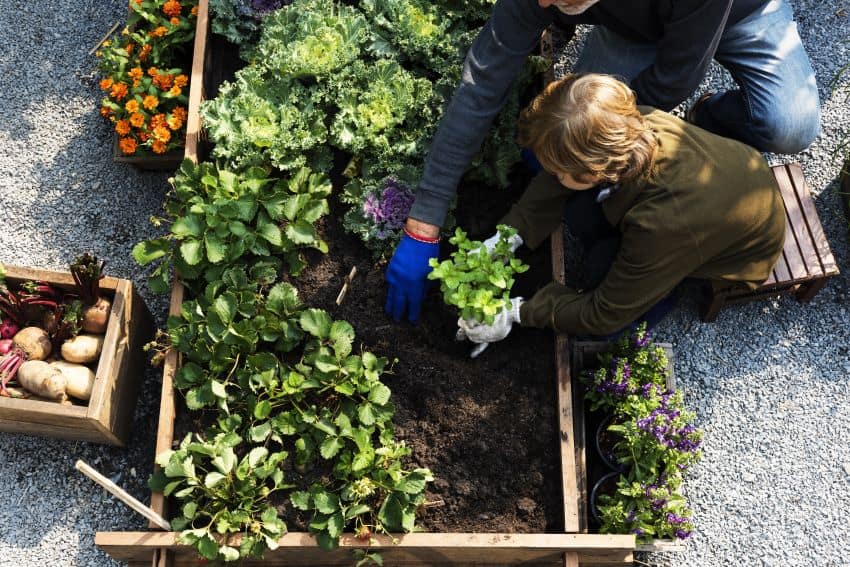How to grow fresh herbs at home

Fresh herbs provide a depth of flavor and nutritional value for cooking, teas, cocktails, and herbal remedies. Unfortunately, despite carefully picking the freshest at the store, they often wilt in the fridge before we get to use them. Growing your herb garden at home is not only an eco-friendly and affordable way to have fresh organic herbs available whenever you need and provides a beautiful scent for your home but also offers bees a safe place to rest and replenish on their pollinating journey.
So, are you ready to get your Mexican herb garden going? Here’s a basic guide:
Step 1: Select the right location
The first step in creating a herb garden is choosing the right location. Most herbs thrive in a spot that receives 4-8 hours of sunlight each day. Find a sunny area in your garden, on your balcony, or even on a windowsill that provides the necessary sunlight. If you have limited space, consider vertical gardening or hanging containers to make the most of your available area.
Step 2: Choose the right containers or beds
The choice of containers or beds for your herb garden depends on your space and preferences. You can use traditional garden beds, hanging baskets, or repurposed containers but your best choice would be, of course, Mexican terracotta pots. Ensure that your containers have adequate drainage. A good trick is to pile pebbles atop the pot’s drainage hole before adding the soil to prevent it from clogging.
Step 3: Prepare the soil
Herbs thrive in well-draining soil. Use a high-quality potting mix or prepare your garden soil by adding compost to improve its texture and fertility. Herbs generally don’t require heavy fertilization, so go easy on the nutrients.
Step 4: Selecting your herbs
You can buy ready-grown plants from your local “vivero” (plant nursery) and plant them into a dedicated herb garden or pot, or buy packets of seeds.
Herb selection is where the fun begins. Here are some traditional herbs well-suited to Mexico’s climate and cuisine, but you can try growing any herb you like.

Cilantro (Coriandrum sativum)
Cilantro is a staple in Mexican cooking, is easy to grow and thrives in containers or garden beds. All you have to do is buy a packet of seeds, sprinkle on soil in a flower pot, and cover with half an inch of soil. Water the seeds just enough to make the soil moist but not flooded and continue lightly watering every day. The seeds will start sprouting about ten days later and continue growing. If you see the plants slanting diagonally, it means they are seeking sun, so move the flower pot to where it can receive more direct sunlight. You can start harvesting 40 days after planting by trimming the branches.
Vaporub (Plectranthus hadiensis)
This plant smells delightfully similar to Vicks Vaporub, hence the name, but is unrelated to the ingredients in the medicinal balm. It is widely used as an ornamental plant because it is easy to cultivate, propagate, and maintain, and its thick leaves on long branches provide a bright pop of color and fragrance. It can be grown in pots or outdoor gardens, grows quickly, and takes very simple care. It is popularly used for decongesting the respiratory tract in case of sinusitis or cough, just drop 12 leaves in a cooking pot with a quart of water, boil for 10 minutes, and then inhale the vapors.

Epazote (Dysphania ambrosioides)
Epazote is a herb widely loved in Mexican cuisine. Traditionally added to black beans (for its anti-flatulence properties), it also contributes wonderful flavor to salsas, quesadillas and mushroom soup. This plant can be easily grown from a simple sprig. First, place the fresh epazote sprig in a glass of non-chlorinated water. Leave it there for about five days. If it stays green, it’s doing well; if it wilts, try another sprig. When it shows roots, transplant the epazote into the soil. Place it wherever it receives 4 hours of direct sunlight daily and water every three days.
Hoja Santa (Piper auritum)
Hoja Santa has a distinct anise flavor and adds a spectacular twist to many dishes. Designate its spot in an ample and shady spot, as it loves to spread out in warm and humid areas and does not like to share space with others. Sprinkle seeds in the soil and be patient. You will begin to notice growth in three months. Water it once daily, as it thrives in humidity and does not tolerate dryness.

Mint (Mentha spicata)
Mint is widely loved for its scent and is a very useful herb for making drinks, from tummy-soothing teas to mojitos. It is best to grow indoors year-round in a very bright location to prevent it from stretching for the light and becoming pale. Aim for a well-balanced soil by watering only when the soil feels dry to the touch and the pot feels light. A good trick is to move the pot to the sink, and let running water flush through and out the bottom drainage hole three times. Then let it drain fully and return it to its place. Regular trimmings are necessary to keep your mint plant bushy and encourage new growth. Cutting just above a set of leaves will prompt two new stems to sprout from the leaf nodes. Word of caution: mint is slightly toxic to dogs if eaten in large quantities, so keep this plant out of their reach.
Basil (Ocimum basilicum)
This plant is a real beauty to behold and is well loved in many dishes. Basil seeds are sown shallowly and covered with a thin layer of mulch. Keep the seedbed in the shade and constantly humid until the seeds germinate 10-15 days later. Then, water regularly and place the seedbed in the sun. Transplanting outdoors is usually done two months after sowing, leaving a space of 15 inches in all directions between plants. You can start harvesting 40 days after transplanting, cutting the ends of its stems before they grow any flowers.

Step 5: Watering and maintenance
How can you tell when most plants need watering? When the leaves are looking “sad” and pointing to the ground. Consistent watering is essential for herb health. Herbs generally prefer slightly moist soil but be careful not to overwater, as this can lead to root rot. It’s a good idea to water your herbs in the morning to allow excess moisture to evaporate during the day.
Regular pruning and harvesting of your herbs promotes bushy growth and ensures you have a steady supply of fresh leaves. Remove yellowing or dead leaves to keep the plants healthy.
Creating an herb garden at home is a rewarding hobby that provides a relaxing green view, and a rich array of flavors and aromas. No matter your space or resources, there’s always room for a herb garden. So, roll up your sleeves, get your hands dirty, and watch as your herb garden flourishes. Happy gardening!
Sandra is a Mexican writer and translator based in San Miguel de Allende who specializes in mental health and humanitarian aid. She believes in the power of language to foster compassion and understanding across cultures. She can be reached at: [email protected]
Source: Mexico News Daily

